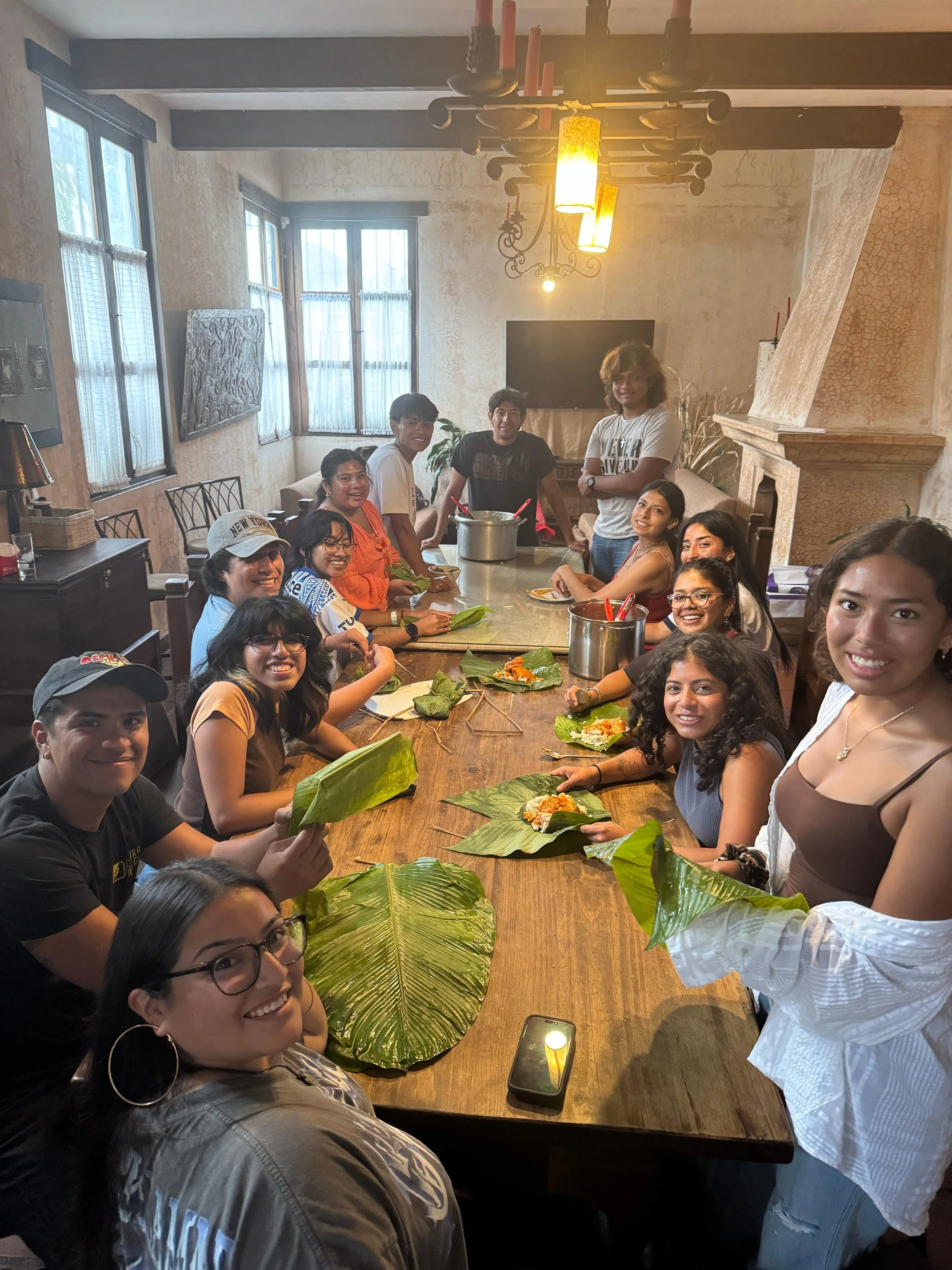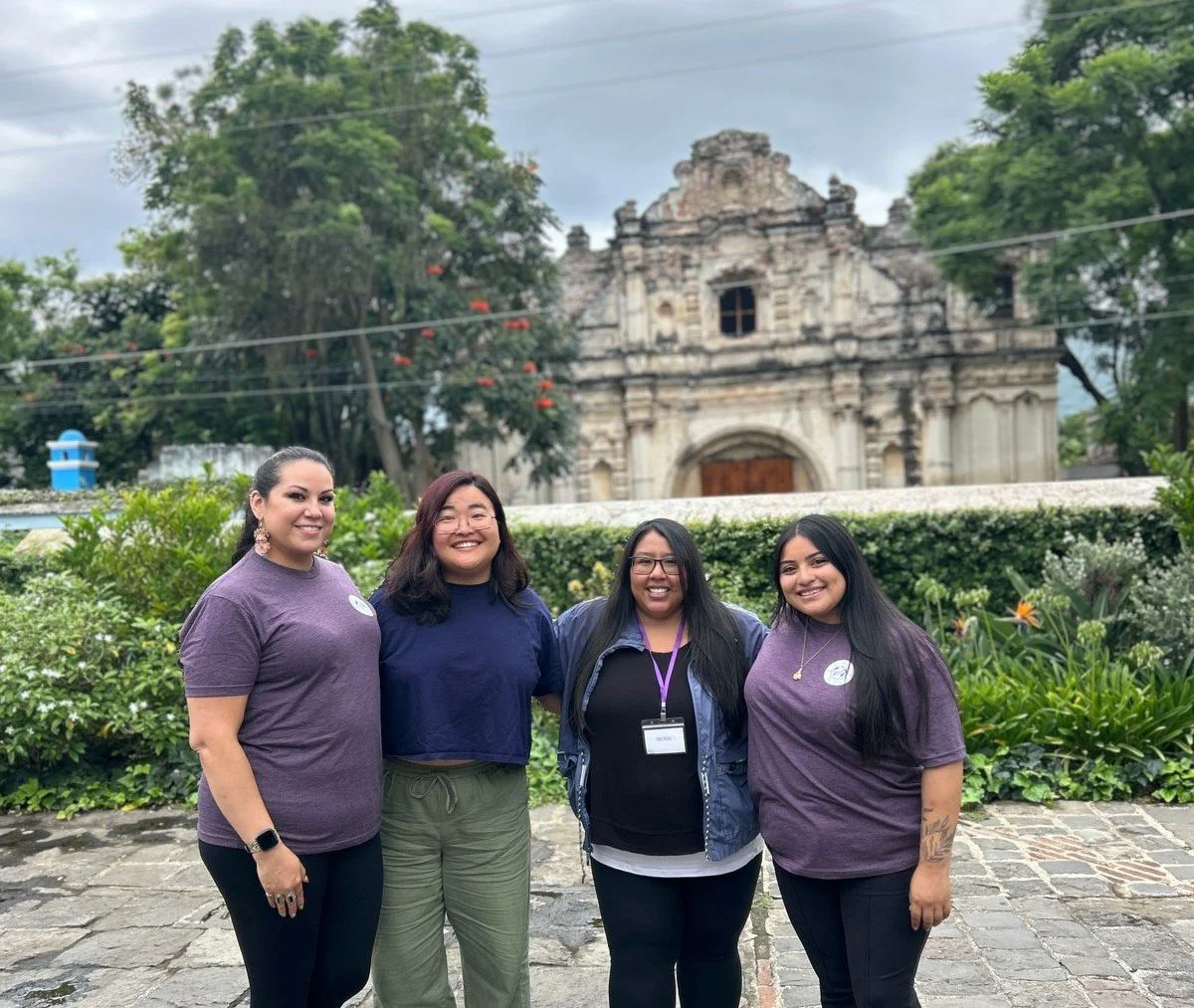From Participant to Team Member, Reflections from Ties’ First Intern
Antigua, Guatemala – 2019, during Bella’s heritage journey with The Ties Program.
Walking through the cobblestone streets of Antigua, with its pastel exteriors and centuries-old churches framed by volcanic peaks, I felt both grounded and suspended, like I had stepped back into a place that had been waiting for me. Coming back to Guatemala in this way—as the first-ever intern for Ties, as an adoptee born in Guatemala, and a proud participant in the Classic Ties program and the Service and Language pilot program—this was deeply personal. I absolutely loved my experience as a participant, and now, returning in this new role as a mentor for other Guatemalan adoptees, I felt a deep sense of responsibility and gratitude. This time, I wasn’t just on my own journey—I was walking alongside others on theirs.
As staff members—the majority of us adoptees from around the world—we came into this experience with shared intention, but different lived experiences. Our role wasn’t to guide anyone’s path, but walk beside them with care, awareness, and deep respect for what this experience might uncover. It was especially meaningful for me to support a new generation of adoptees navigating their first time in Guatemala, many of them echoing the emotions I once carried. This post is a reflection on what it meant to support adoptees as they returned to their birth country—emotionally, culturally, and logistically. It’s about the moments we witnessed, the space we held, and the quiet lessons we’re still carrying. To support this kind of journey is to feel the weight of it—and the privilege.
Bella with fellow Service & Language participants during her 2024 volunteer experience at La Familias del Cafe
One of the highlights of the Service and Language, is that participants have the opportunity to not only learn Spanish but to put what they learn into practice at their volunteer locations and around Antigua in their free time. It’s really special to see people go from uncomfortably saying, “Hola, mi nombre es…” to being able to barter at the market, greet people, and feel more confident and comfortable navigating Guatemala. I was ecstatic to see everyone’s progress over our two week program.
Part of the aim of the program is to give participants a taste of life In Guatemala. It’s undoubtedly still in a bubble, a suspension of reality, but they go to the grocery store and the market, they cook food, shop, attend class, volunteer daily as if it were a job…all elements of daily life but in an unfamiliar city that feels more familiar with each day. Participants become comfortable navigating the streets and knowing how to get to places without needing directions; they learn where their favorite restaurants, shops, and watering holes are.
This year’s group connected almost instantly. Our orientation dinner was full of laughter and open-hearted storytelling. People talked about what it meant to be an adoptee, sharing stories that were similar in feeling, even if different in detail. That night, no one seemed nervous. A sense of community was forming, which is exactly what the Service and Language program hopes to foster.
For language class, everyone is paired with their own tutor, each lesson tailored to the participant’s level of Spanish and their goals. After class a group of three to five participants fan out to volunteer experience, where they were served lunch and volunteered for several hours. 2025 sites include the Children’s Home of El Amor de Patricia, the community of Yalu, Niños con Bendición, and La Familia del Café. Afterward, participants have free time to explore, eat dinner, or decompress.
Bella with the S&L participants during a cooking class in Guatemala – learning to prepare a traditional dish together
But behind the surface of routines and shared meals was something deeper: emotional processing. For many, this trip was the first time traveling without parents or loved ones. That return stirred grief, wonder, confusion, joy, and every emotion in between. That came out in any number of ways, some healthy, some not. As staff, holding space for these complex journeys required more than logistical planning—it asked us to be emotionally present. To allow space to make mistakes of all kinds. It meant listening more than speaking. And resisting the urge to offer easy comfort or explanations. Our job wasn’t to “fix” that. It was to sit beside. To be there.
In the evenings, when the day’s classes and volunteer work ended, something special would often unfold—unofficial movie nights. We’d throw on a classic teen movie from the ’90s or early 2000s—Mean Girls, Clueless, Sydney White—and the living room would fill with laughter, snacks, and people draped in blankets on every available couch and cushion. These were not planned, but became a ritual for many participants. The nostalgia, the shared pop culture references, and the simple act of being together helped build a kind of bonding that felt effortless and real. We weren’t just adoptees on a heritage trip—we were friends, peers, people who got each other without needing to explain why. The comfort of being surrounded by others who shared similar identities, questions, and histories allowed many to relax into themselves more fully than they had in a long time. They were thriving in the company of those who understood them.
A few members of the Guatemalan Ties staff team—who are also adoptees—in Antigua, 2024.
As a person who is adopted, I recognized the emotional terrain participants were navigating—feelings of disconnection, longing, and identity that often don’t have clear language. I also recognized the less than healthy coping mechanism that some turned to. That insight helped me understand what they might be feeling before they even found the words. But it also required me to hold firm boundaries. My empathy was a bridge, not a mirror. I had to stay grounded in my role while honoring the fact that this wasn’t my trip. It was theirs.
Supporting others through this kind of deeply personal and emotionally layered journey is not easy. It demands emotional preparedness, flexibility, and a willingness to confront discomfort—your own and others’. Holding space means knowing that silence can be sacred, that tears can be a form of healing, and that joy can come in unexpected moments, like helping someone order coffee in Spanish for the first time, or watching them laugh after a long day.
Above all, holding space meant recognizing that this wasn’t just a program. It was, for many, a turning point. And to be trusted to accompany someone during a moment like that is not something we take lightly. It is a responsibility—and a privilege—we carry with care.
Feeling inspired?
We invite you to explore what a Ties trip might mean for you or your family. Whether you're ready to travel or simply starting to ask the big questions, there's a community here for you.
Learn more about our 2026 Guatemalan Ties Heritage Journey. Request the info packet to explore the itinerary, pricing, and what makes this trip so special.




